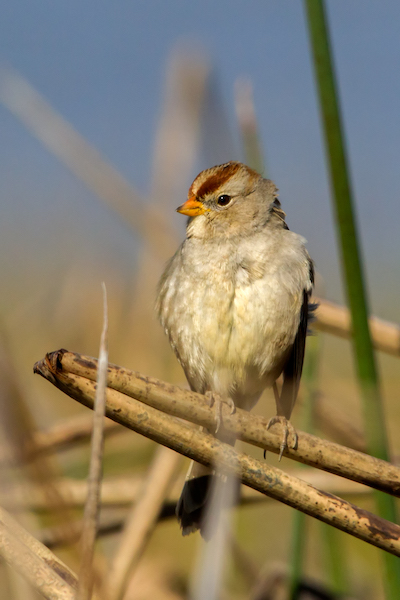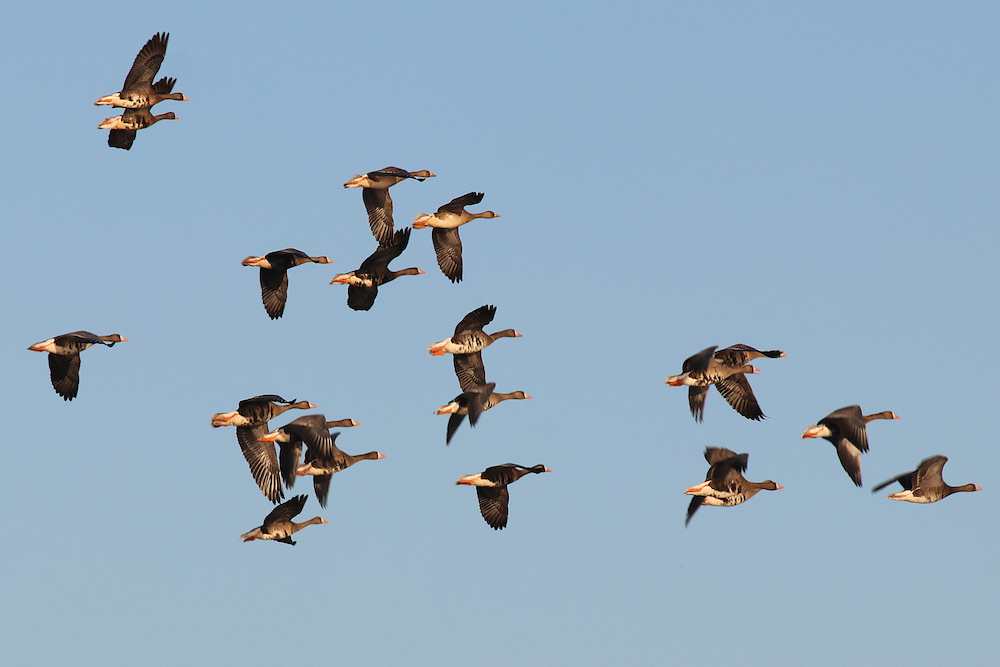The Official Start of Fall
By Luke Matthews
There are many ways to measure the arrival of fall such as shorter days, cooler weather, and changing colors. While these are standard metrics that everyone is familiar with, I rely on a different set of cues to announce the arrival of fall: the sights and sounds of a few key bird species. Once I start to see and hear the following species over my house in West Sacramento, I know that fall has arrived: Greater White-fronted Geese, Sandhill Cranes, and White-crowned Sparrows.

The first White-crowned Sparrows that I noticed in my yard arrived the weekend of September 19. About a week later, I heard the distinctly unique call of Sandhill Cranes and saw large groups of Greater White-fronted Geese flying over my house. I’m always amazed at how closely the arrival of these three species matches up with the first official day of fall. One of the few things these three species share is that they overwinter in the Sacramento Valley and the consistently arrive at the beginning of fall.

Greater White-fronted Geese spend most of the summer months on their breeding grounds up in the tundra. These geese then migrate south to feed and rest in the warmer climates of their wintering ground, which are California’s Central Valley (including large numbers in Sacramento Valley rice fields), the southern ends of the Central and Mississippi Flyways, and Mexico. In contrast, Sandhill Cranes primarily nest in marshes surrounded by either grassland or forest habitats. While there are pockets of breeding Sandhills across the northern portions of the united states, the majority of them breed throughout Canada up to the tundra. These cranes also overwinter in the warmer climates found in California’s Central Valley (including rice fields), the southern United States, and Mexico. White-crowned Sparrows, unlike the other two species, have breeding population in California as well as the western united states and across northern Canada. Despite having breeding populations within our state these sparrows are also absent from the Sacramento Valley except for the fall and winter months.
These and many other fall migrants are starting to arrive en masse, so get out the binoculars and cameras and go see some birds!
Luke Matthews is the Wildlife Programs Manager for the California Rice Commission






